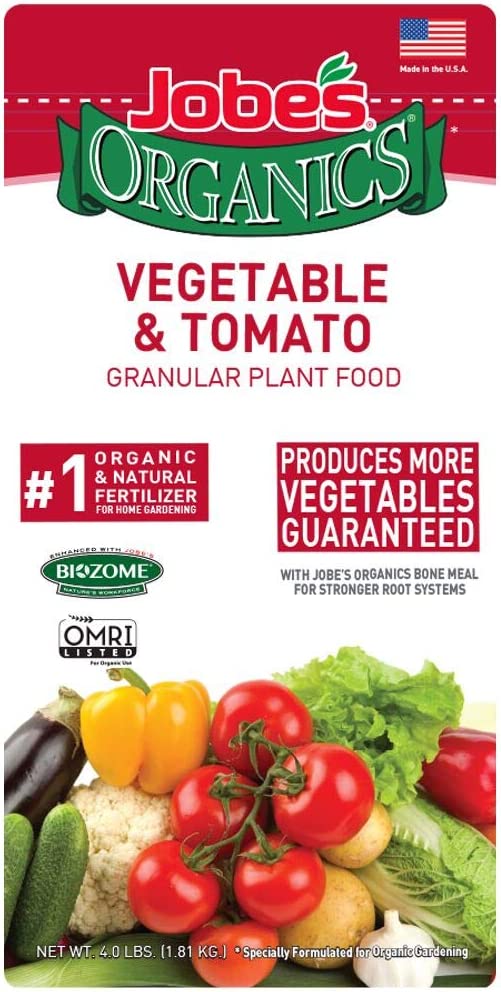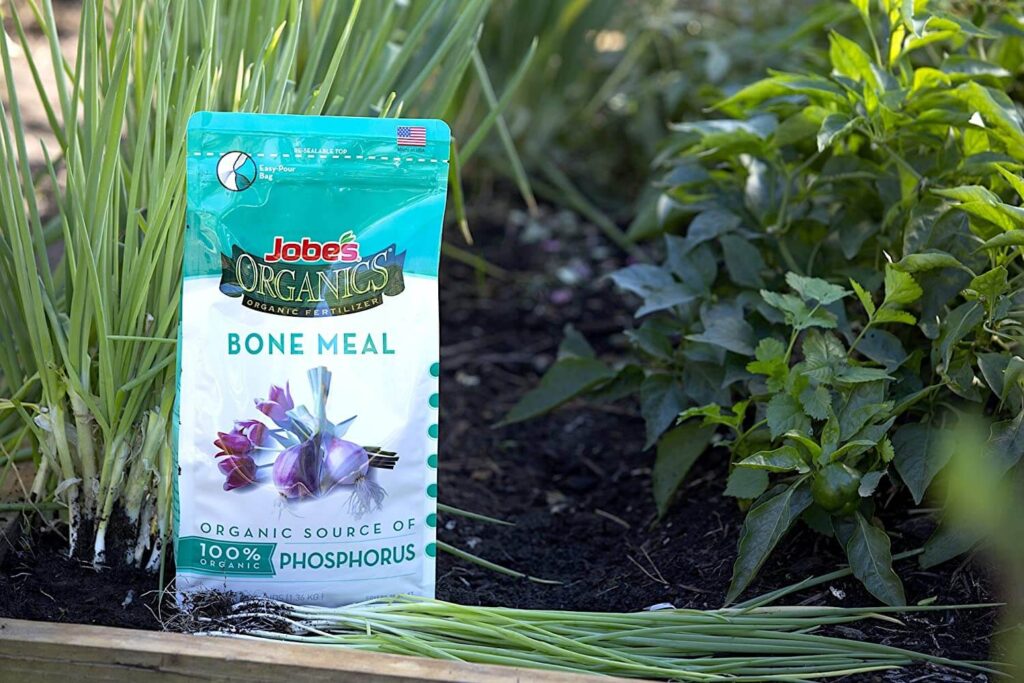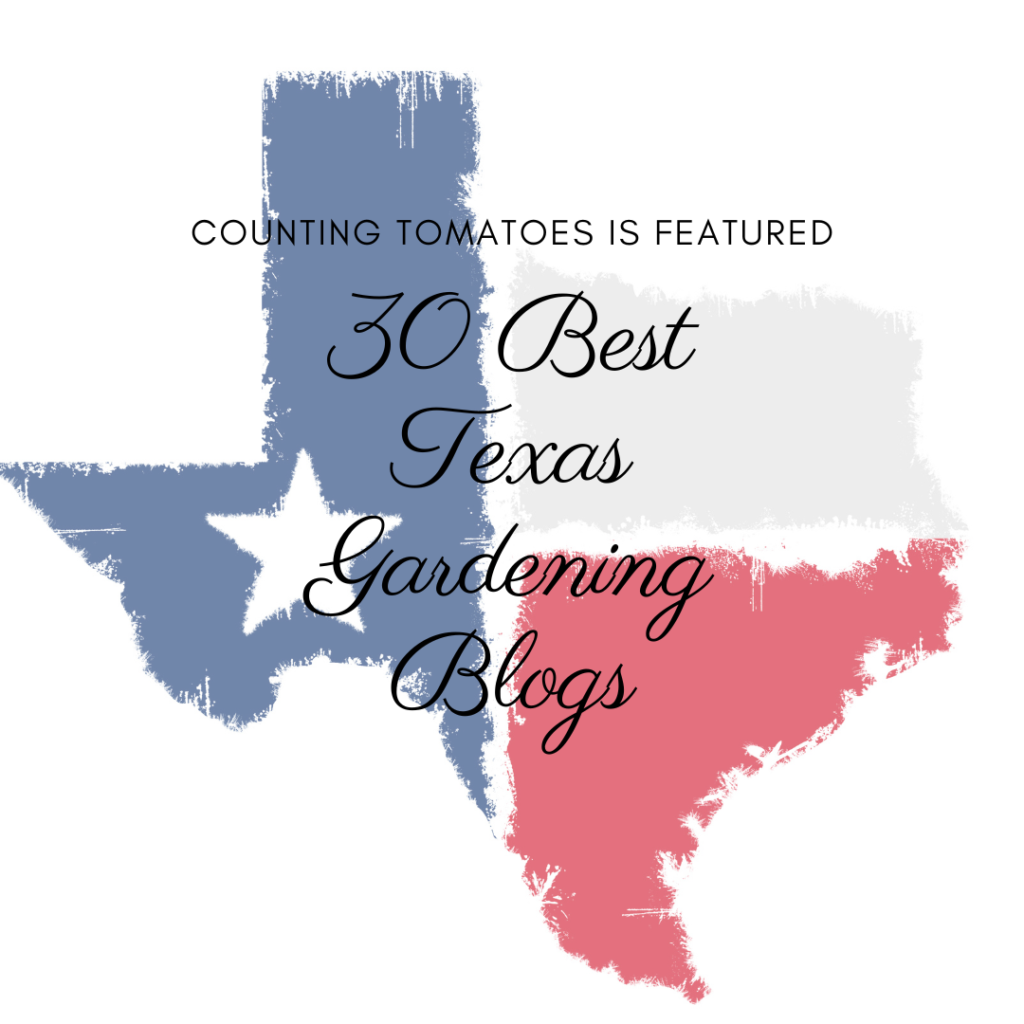Gardening season is upon us and it’s time to make sure you have the right fertilizers to ensure your gardening is blooming, vibrant and bountiful. Plants require three main nutrients for growth with are nitrogen, phosphorous and potassium. The best bloom booster fertilizers for vegetables and flowers are going to be higher in phosphorous to promote flowering and fruiting. I’ll explain more on the nutrients required for vegetables and flowers below.
What Major Necessary Nutrients do Plants Need to Grow?
You’ll often see a n-p-k ratio listed on fertilizers available at your local garden center, but what does this mean? N is the amount of nitrogen, P is the amount of phosphorous and K is potassium in the fertilizer all of which are essential nutrients for plant growth.
A n-p-k ratio of 10-10-10 for example, means it’s a balanced fertilizer where all of the nutrients are in equal quantities. In a 100 pound bag of 10-10-10 fertilizer, you will have 10 pounds of nitrogen, 10 pounds of phosphorous and 10 pounds of potassium. The remaining 70 pounds is filler material that is used in the production of mixtures and is typically a course sand; it has no nutrient value. The sole purpose of the filler material is to allow the manufacturer to meet the NPK specification of the final product due to the normal variances in the plant nutrient concentration of the raw materials.
A ratio that is 10-30-20 has a high concentration of phosphorous which promotes fruits and blooms.
The Role of Nitrogen in Plant Growth
Nitrogen is one of the base nutrients essential to plant growth and development and used to create proteins. This nutrient is vital to promote green leaves and stalk development. Nitrogen is present in both the soil and air. Plants take in nitrogen from the soil from decaying and organic matter which is converted into nitrates and ammonium salts by micro organisms. Nitrogen is responsible for the formation of chlorophyll which feeds the plant through the process of photosynthesis. Without an adequate source of nitrogen, the plant growth will be slow and stunted.
The Role of Phosphorous in Plant Growth
Phosphorous plays a role in using and storing the energy created in photosynthesis. This nutrient helps move nutrients throughout the plant, roots and aides in plant growth and maturity. Phosphorous is necessary for flower production and fruit production. It also converts light energy into adenosine triphosphate (ATP) during photosynthesis. ATP is the primary molecule for storing energy.
The Role of Potassium in Plant Growth
Potassium is the powerhouse in root development. It protects the plant during heat and cold, reduces the chances of wilt by making sure the plant roots system are strong and available for the uptake of water. Potassium also plays a vital role in plant immunity for disease resistance. Potassium impacts flower setting and fruit production as well.
For best results it is recommended to get a soil test when starting a garden. Retest every few years so you know what nutrients are abundant and which element nutrients are lacking.
How Often and When Should you Fertilize Vegetables?
Often I start my plants from seeds and once they get their first set of true leaves I start watering them with a diluted version of a balanced water soluble fertilizer. I generally fertilize new seedling one to two times per week and only mix the fertilizer half strength so they plants are not burned by the nitrogen.
After seedlings have 3 or 4 sets of true leaves, I fertilize weekly with a balanced fertilizer mixed as recommended.
In preparation for growing a spring or fall garden, I amend my soil with a balanced fertilizer two weeks prior to planting. I prefer a granular fertilizer easily applied using a walk behind spreader.
After planting, I fertilize weekly with a balanced fertilizer until the seedlings have been in the garden for approximately 4 – 6 weeks and reached a fairly mature size.
After the vegetable plants have put on quiet a bit of green healthy leaves and have a strong stalk, I switch to a fertilizer higher in phosphorous and potassium. I continue a weekly fertilizer regime for a bountiful harvest.
How Often and When you Should Fertilize Flowers?
You can grow beautiful flowers without a huge amount of phosphorous. In my flower beds I mix a granular organic bloom booster fertilizers into my soil prior to planting and water it in well. A slow release organic fertilizer will feed the flowers throughout the growing season. When the flowers are in their flowering stage fertilize once a month with a water-soluble fertilizer to continue to promote abundant flowering throughout the growing season. Flowers do not require nearly as much fertilizer as vegetable plants.
My Favorite Bloom Booster Fertilizers for Vegetables
The following are my favorite regularly used fertilizers in my vegetable garden:
Jobe’s Organics Vegetable & Tomato Granular Plant Food – This organic granular fertilizer can be worked into the soil approximately two inches away from the fruit-bearing plants throughout the growing season and can also be incorporated into the planting rows and holes when transplanting seedlings out into the garden. The npk ratio on this product is 2-5-3. Be sure to water well after application.

AgroThrive Fruit & Flower Organic Fertilizer – One of my favorite organic fertilizers I have used over the past several years is this 3-3-5 AgroThrive Fruit & Flower Organic Fertilizer. This organic fertilizer is fast acting as the elemental nutrients are broken down prior to bottling so the microbes in the soil do not have to digest the nutrients prior to use. This accelerates the nutrient uptake resulting in faster growth and higher yields. Mix 2 oz – 4 oz with one gallon of water depending on plant maturity.

Bone Meal – A good way to amend the planting hole when transplanting seedlings into a ground or container is to add a handful of bone meal into each planting hole and mix with the existing soil. Bone meal has a nutrient ration of 4-12-0 and will provide more than enough phosphorous for high yields.

Fox Farm Big Bloom – Big Bloom is an organic water-soluble solution that supplies a nutrient ratio of 0 – 0.5 – 0.7. It’s a good value product and provides plenty of nutrients for plant growth as its formulated from worm castings and bat guano.

Fox Farm Tiger Bloom – Once flower buds set, you can follow up with Tiger Bloom. It is a non-organic and water-soluble product. This powerful bloom booster is higher in phosphorous for multiple fruit and flower set. The ration of nutrients in this mix is 2 – 8 – 4. Use Tiger Bloom as a foliar spray or water onto the soil.

You can also make you own homemade bloom booster fertilizers using some household ingredients for making phosphorous rich fertilizers.
If you’re growing vegetables in containers, using a water soluble fertilize is the best way to fertilize. This ensures you’re not disturbing the soil surface by mixing in granular fertilizers.
My Favorite Bloom Booster Fertilizers for Flowers
Many annuals such as impatiens, petunias, and geraniums can use any of the same bloom fertilizer as vegetables. The only exception is a few acid loving plants like azaleas.
Azaleas do not need a high amount of phosphorous; they do need a slightly acidic soil to take up nutrients. Be sure to test your soil to determine the pH level. Feeding a blend specific for acid loving plants twice a year should be sufficient as long as your soil is the correct pH. A good organic option is Dr. Earth Organic Acid Lovers Blend.
Miracle-Gro Water Soluble Bloom Booster Flower Food – This non-organic option is a good fertilizer for covering a large area as you can pour the water-soluble granules into a hose end garden feeder quickly fertilizing an entire flower garden bed. I have always had abundant blooms on my annuals with this product.
Evidence of a Lack of Nutrients
A lack of nitrogen will present itself in the form of a plant that is slow growing and yellowing leaves.
Plants that are deficient in phosphorous will have slow growth and pale yellowing leaves similar to a nitrogen deficiency.
Potassium deficiencies will result yellowing and purple leaves, poor flower and fruit formation.
Conclusion
When using any fertilizer, organic products are always the best choice. Organic fertilizers feed soil microbes, making the soil easier to work. They also do not form a crust on the soil surface like many chemical or inorganic fertilizers. Chemical based fertilizers are also very concentrated, so one must be careful to dilute the fertilizer to avoid burning the plants. This garden season, look at the npk numbers on the fertilizers and choose one that will be higher in phosphorous. You will grow healthy plants and get better harvests from your garden.
Linking up with The Cape Coop


